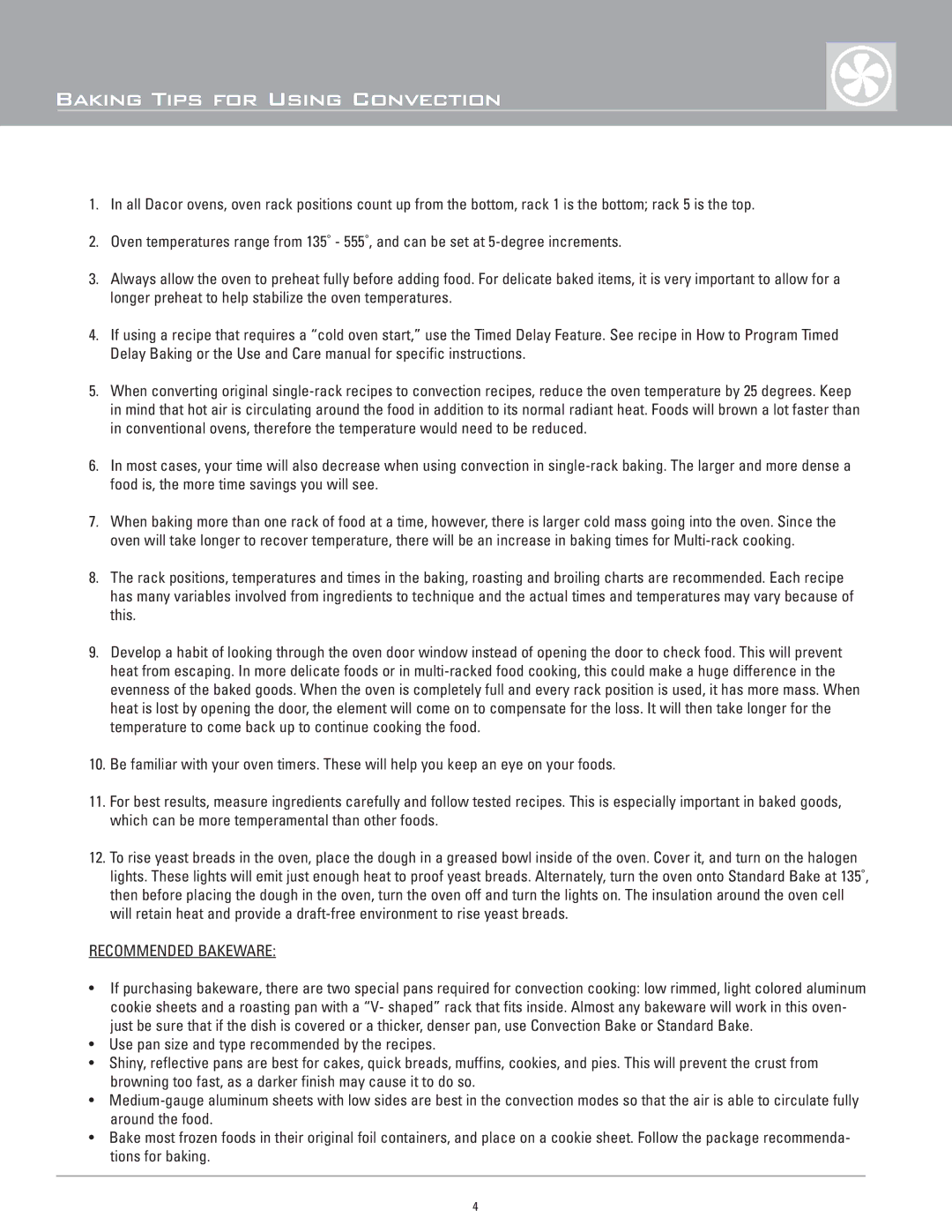
Baking Tips for Using Convection
1.In all Dacor ovens, oven rack positions count up from the bottom, rack 1 is the bottom; rack 5 is the top.
2.Oven temperatures range from 135˚ - 555˚, and can be set at
3.Always allow the oven to preheat fully before adding food. For delicate baked items, it is very important to allow for a longer preheat to help stabilize the oven temperatures.
4.If using a recipe that requires a “cold oven start,” use the Timed Delay Feature. See recipe in How to Program Timed Delay Baking or the Use and Care manual for specific instructions.
5.When converting original
6.In most cases, your time will also decrease when using convection in
7.When baking more than one rack of food at a time, however, there is larger cold mass going into the oven. Since the oven will take longer to recover temperature, there will be an increase in baking times for
8.The rack positions, temperatures and times in the baking, roasting and broiling charts are recommended. Each recipe has many variables involved from ingredients to technique and the actual times and temperatures may vary because of this.
9.Develop a habit of looking through the oven door window instead of opening the door to check food. This will prevent heat from escaping. In more delicate foods or in
10.Be familiar with your oven timers. These will help you keep an eye on your foods.
11.For best results, measure ingredients carefully and follow tested recipes. This is especially important in baked goods, which can be more temperamental than other foods.
12.To rise yeast breads in the oven, place the dough in a greased bowl inside of the oven. Cover it, and turn on the halogen lights. These lights will emit just enough heat to proof yeast breads. Alternately, turn the oven onto Standard Bake at 135˚, then before placing the dough in the oven, turn the oven off and turn the lights on. The insulation around the oven cell will retain heat and provide a
RECOMMENDED BAKEWARE:
•If purchasing bakeware, there are two special pans required for convection cooking: low rimmed, light colored aluminum cookie sheets and a roasting pan with a “V- shaped” rack that fits inside. Almost any bakeware will work in this oven- just be sure that if the dish is covered or a thicker, denser pan, use Convection Bake or Standard Bake.
•Use pan size and type recommended by the recipes.
•Shiny, reflective pans are best for cakes, quick breads, muffins, cookies, and pies. This will prevent the crust from browning too fast, as a darker finish may cause it to do so.
•
•Bake most frozen foods in their original foil containers, and place on a cookie sheet. Follow the package recommenda- tions for baking.
4
